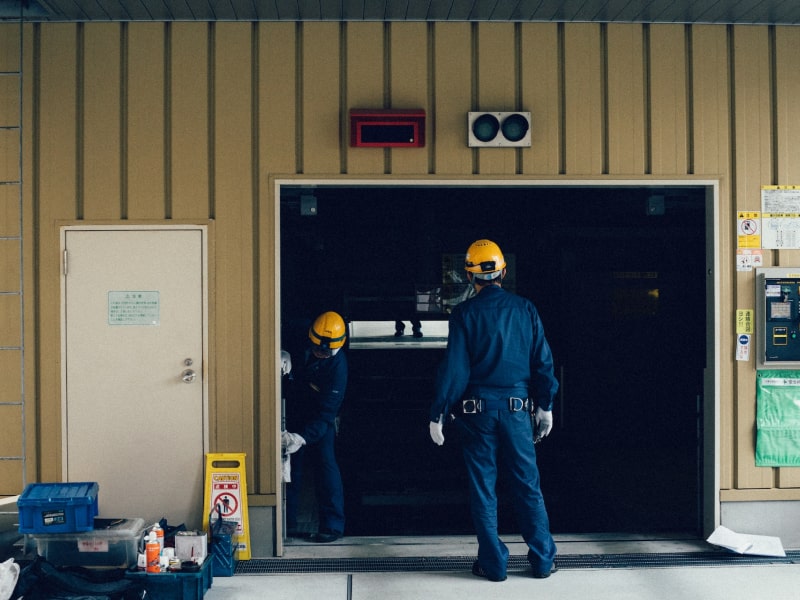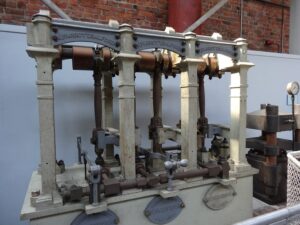Industrial gearboxes aid the transfer of energy between different machines. They can efficiently adjust the torque and speed for the converted energy into useable formats. That’s what makes them critical components in various manufacturing plants across the world.
While the COVID-19 pandemic resulted in a significant market slowdown in 2020, the sector is slowly recovering and gaining its pre-pandemic growth rates.
In 2022, the industrial gearbox market is valued at $41.4 billion, and it’s projected to grow to $49.2 billion by 2026.
Let’s cover some of the main industrial gearbox market report findings in 2022, including the market trends that shape the industry, key players, and other statistics.
The Industrial Gearbox Market in 2022: 7 Key Trends
Here are 7 key industrial gearbox market trends:
Industrial Gearbox Market Size Growth
Between 2022 and 2026, the industrial gearbox market size will grow at a 4.2% CAGR. This growth will be mainly driven by the development of the following sectors:
- Helical gearbox segment: This sector is forecasted to reach $18.8 billion by the end of 2026 (at a growth rate of 4.3% CAGR). This positive trend results from the increased demand for these compact and efficient gearboxes in the turbine, chemical, and power industries.
- Planetary gearbox segment: The planetary gearbox sector currently has a 29.6% industrial gearbox market share. This segment is projected to grow at a 4.9% CAGR by 2026. The segment’s growth is driven by increasing investments in the food & beverage, mining, and cement industries.
Industrial Gearbox Manufacturers: Major Players
The leading industrial gearbox manufacturers are:
- Sumitomo Heavy Industries Ltd. (Japan)
- Rexnord Corp. (United States)
- David Brown Santasalo (UK)
- Siemens AG (Germany)
- Bonfiglioli Riduttori (Spain)
- Johnson Electric Holdings Limited (Hong Kong)
- Emerson Electric Co (United States)
- Flender (Germany)
- Kumera Corporation (Finland)
- Nanjing High Accurate Drive Equipment Manufacturing Group Co. Ltd (China)
Crucial Market Driving Factors
Here are some of the main drivers of the industry:
1. Development of Industrial Automation
There has been an increased use of manual task automation and robotization throughout various industrial manufacturing sectors (including the gearbox industry) in the past few decades.
This has led to the manufacturing of more energy-efficient, high-precision gearboxes, resulting in the heavy growth of this sector.
2. Industrialization of the Middle East, India, and Southeast Asia
India, Southeast Asia, and the Middle East are heavily investing in infrastructure, healthcare, commercial and industrial manufacturing. Additionally, their power demand is steadily growing.
These increasing investments and energy demands have also driven the industrial market development, propelling the gearbox segment growth.
3. Rising Demand for Clean Energy

The increase in the global energy demand has driven the gearbox sector growth.
Another key trend is the growing demand for renewable energy such as wind power generation. Such clean energy sources rely heavily on industrial gears for their:
- High torque
- Ability to take on high axial and radial load
- Speed reduction properties
According to the latest Technavio industrial gearbox market report, wind turbine gearboxes are expected to decline in price by about 5% by 2024 (due to technological advancements in the manufacturing process.) This will further increase demand and stimulate the sector’s growth.
Main Market Restraining Factors
Here are some key factors that hinder the growth of the industrial gearbox sector:
1. High Manufacturing and Maintenance Costs
The market growth is hampered by the high gearbox manufacturing and maintenance costs. Most gearboxes are manufactured through complex engineering processes like milling, grinding, and turning.
These processes also generate a lot of vibration, negatively impacting the gearbox surface. This makes the units more susceptible to breakdown and increases their maintenance costs.
2. Limited Investment Opportunities After COVID-19
The COVID-19 pandemic has halted all global manufacturing operations. This slowdown has resulted in fewer investment opportunities in the market. While the industry is slowly recovering, it has still not reached its pre-COVID state.
Regional Trends
The geographic trends for the industrial gearbox market are:
1. Dominance of the APAC Market
The APAC segment is expected to hold the largest gearbox market share due to the region’s massive economic growth in the following industries:
- Food & beverage
- Construction
- Power generation
- Agriculture and more
Some key players in the Asia-Pacific region are India, Japan (forecasted at a 2.3% CAGR), Korea, and China (China alone is estimated to reach $11.2 billion by 2026).
2. Growth of Other Geographic Markets

Other geographic market trends in the forecast period 2022-2026 are:
- USA: The United States currently has over 20% of the total market share (about $8.4 billion).
- Canada: The country will show growth of 2.4% CAGR over that period.
- Germany: The country’s gearbox market is expected to grow at a 3.2% CAGR rate.
- Europe: The European market is projected to reach $11.9 billion by 2026.
Leading Industrial Gearbox Segments
The leading industrial gearbox segments for the forecasted period 2022-2027 are as follows:
- Gearboxes by type: The helical gearbox segment will spearhead the market due to its advantages over other gearbox types.
- Gearboxes by design: Parallel axis will be the dominating gearbox design.
- Gearboxes by industry: The power industry will have the biggest growth based on the market trend forecast.
Recent Market Developments
Some of the leading market developments in the gearbox industry in recent years include NGC’s breakthroughs:
- 2020: In 2020, Nanjing High Accurate Drive Equipment Manufacturing Group Co. Ltd (NGC) introduced their WinGearTM brand. The gearboxes are lightweight, have reduced electricity costs, and feature advanced bearing technology.
- 2021: The company took an order for 656 dual-stage gearboxes for the subway system in Perth, Australia. The manufactured gearboxes have advanced features like high vibration resistance, solid bearings, and a wide operating temperature range (-25℃ to 50℃).
Industrial Gearbox Market Trends: Takeaways
While the gearbox market is still in its recovery stages in the COVID-19 aftermath, it is showing signs of slow recovery. The forecasts predict that major developments in the industry will drive growth in the next 5 years.
If your company relies on industrial gearboxes to sustain everyday operations, it’s vital to ensure your gearbox units are in healthy condition. If you’re in need of industrial gearbox repair, don’t hesitate to contact Houston Pump and Gear.
We are an industrial gearbox repair company that provides gearbox inspection, reverse engineering, repair, overhaul, and gear cutting services.
Contact us today to receive a free quote!




